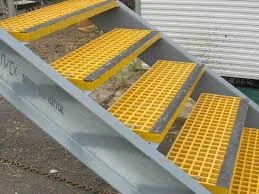
-
 Afrikaans
Afrikaans -
 Albanian
Albanian -
 Amharic
Amharic -
 Arabic
Arabic -
 Armenian
Armenian -
 Azerbaijani
Azerbaijani -
 Basque
Basque -
 Belarusian
Belarusian -
 Bengali
Bengali -
 Bosnian
Bosnian -
 Bulgarian
Bulgarian -
 Catalan
Catalan -
 Cebuano
Cebuano -
 China
China -
 China (Taiwan)
China (Taiwan) -
 Corsican
Corsican -
 Croatian
Croatian -
 Czech
Czech -
 Danish
Danish -
 Dutch
Dutch -
 English
English -
 Esperanto
Esperanto -
 Estonian
Estonian -
 Finnish
Finnish -
 French
French -
 Frisian
Frisian -
 Galician
Galician -
 Georgian
Georgian -
 German
German -
 Greek
Greek -
 Gujarati
Gujarati -
 Haitian Creole
Haitian Creole -
 hausa
hausa -
 hawaiian
hawaiian -
 Hebrew
Hebrew -
 Hindi
Hindi -
 Miao
Miao -
 Hungarian
Hungarian -
 Icelandic
Icelandic -
 igbo
igbo -
 Indonesian
Indonesian -
 irish
irish -
 Italian
Italian -
 Japanese
Japanese -
 Javanese
Javanese -
 Kannada
Kannada -
 kazakh
kazakh -
 Khmer
Khmer -
 Rwandese
Rwandese -
 Korean
Korean -
 Kurdish
Kurdish -
 Kyrgyz
Kyrgyz -
 Lao
Lao -
 Latin
Latin -
 Latvian
Latvian -
 Lithuanian
Lithuanian -
 Luxembourgish
Luxembourgish -
 Macedonian
Macedonian -
 Malgashi
Malgashi -
 Malay
Malay -
 Malayalam
Malayalam -
 Maltese
Maltese -
 Maori
Maori -
 Marathi
Marathi -
 Mongolian
Mongolian -
 Myanmar
Myanmar -
 Nepali
Nepali -
 Norwegian
Norwegian -
 Norwegian
Norwegian -
 Occitan
Occitan -
 Pashto
Pashto -
 Persian
Persian -
 Polish
Polish -
 Portuguese
Portuguese -
 Punjabi
Punjabi -
 Romanian
Romanian -
 Russian
Russian -
 Samoan
Samoan -
 Scottish Gaelic
Scottish Gaelic -
 Serbian
Serbian -
 Sesotho
Sesotho -
 Shona
Shona -
 Sindhi
Sindhi -
 Sinhala
Sinhala -
 Slovak
Slovak -
 Slovenian
Slovenian -
 Somali
Somali -
 Spanish
Spanish -
 Sundanese
Sundanese -
 Swahili
Swahili -
 Swedish
Swedish -
 Tagalog
Tagalog -
 Tajik
Tajik -
 Tamil
Tamil -
 Tatar
Tatar -
 Telugu
Telugu -
 Thai
Thai -
 Turkish
Turkish -
 Turkmen
Turkmen -
 Ukrainian
Ukrainian -
 Urdu
Urdu -
 Uighur
Uighur -
 Uzbek
Uzbek -
 Vietnamese
Vietnamese -
 Welsh
Welsh -
 Bantu
Bantu -
 Yiddish
Yiddish -
 Yoruba
Yoruba -
 Zulu
Zulu
Fiberglass Clarifier Solutions for Optimized Water Purification and Solid Removal Efficiency
Fiberglass Clarifier System for Efficient Water Treatment and Solid Removal
In the realm of water treatment technology, the fiberglass clarifier system stands out as an innovative solution designed to enhance the efficiency of water treatment processes and the removal of solids from wastewater. This method is becoming increasingly essential as industries and municipalities confront the challenges posed by growing populations, stricter environmental regulations, and the pressing need for sustainable water management practices.
A clarifier is a critical component in water treatment systems, functioning primarily to separate solids from liquids. The fiberglass clarifier, constructed from durable and corrosion-resistant fiberglass materials, is particularly advantageous due to its lightweight properties and resistance to chemical attacks, which are common in various wastewater environments. This makes it an ideal choice for industries such as food and beverage processing, chemical manufacturing, and municipal wastewater treatment facilities.
One of the key benefits of a fiberglass clarifier system lies in its efficient solid-liquid separation process. The system utilizes gravity to facilitate the settling of suspended solids. As wastewater flows into the clarifier, the flow rate is carefully controlled to encourage the solids to settle at the bottom, forming a sludge layer. The clarified water, now free from a significant portion of particulate matter, is collected from the top and can be further treated or discharged safely into the environment.
The design of fiberglass clarifiers allows for customized configurations that can be tailored to specific operational needs. The flexibility in design includes variations in size, shape, and internal components, which can optimize flow patterns and improve the efficiency of solid removal. Additionally, the lightweight nature of fiberglass structures enables easier installation and maintenance compared to traditional concrete or metal clarifiers, leading to reduced operational costs.
fiberglass clarifier system for efficient water treatment and solid

Moreover, the durability of fiberglass as a construction material ensures a longer lifespan for the clarifier system, reducing the need for frequent replacements and maintenance. This long-term viability is coupled with excellent resistance to algae growth, minimizing maintenance needs and contributing to overall cost savings.
In terms of efficiency, studies have shown that fiberglass clarifier systems can achieve high removal rates of suspended solids, often exceeding 90%. This effectiveness is critical, especially in industries where the presence of solids in effluent can adversely affect downstream processes or violate environmental discharge standards. By significantly improving the quality of treated water, fiberglass clarifiers play a vital role in ensuring compliance with regulatory requirements and environmental protection norms.
Furthermore, integrating a fiberglass clarifier with other treatment technologies, such as biological treatment or filtration systems, can lead to even greater overall system efficiency. The clarifier can serve as a pre-treatment stage, preparing the water for further refinement and ensuring that the corresponding downstream processes operate optimally.
In conclusion, the fiberglass clarifier system represents a forward-thinking approach to water treatment and solid removal. Its advantages, including durability, efficiency, and flexibility, make it an indispensable component in modern water management strategies. As the demand for clean, treated water continues to rise, adopting such advanced technologies will be crucial for industries and municipalities striving toward sustainable water practices and a healthier environment.









